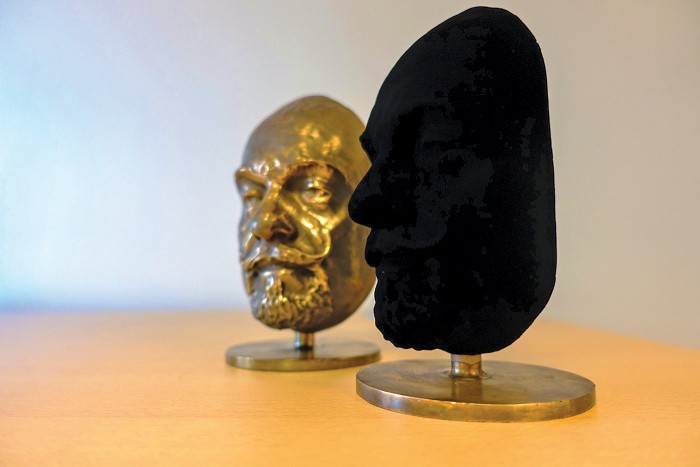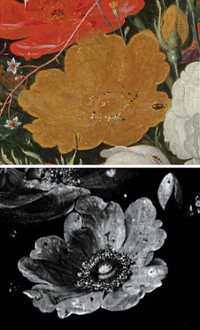Advertisement
Grab your lab coat. Let's get started
Welcome!
Welcome!
Create an account below to get 6 C&EN articles per month, receive newsletters and more - all free.
It seems this is your first time logging in online. Please enter the following information to continue.
As an ACS member you automatically get access to this site. All we need is few more details to create your reading experience.
Not you? Sign in with a different account.
Not you? Sign in with a different account.
ERROR 1
ERROR 1
ERROR 2
ERROR 2
ERROR 2
ERROR 2
ERROR 2
Password and Confirm password must match.
If you have an ACS member number, please enter it here so we can link this account to your membership. (optional)
ERROR 2
ACS values your privacy. By submitting your information, you are gaining access to C&EN and subscribing to our weekly newsletter. We use the information you provide to make your reading experience better, and we will never sell your data to third party members.
Education
Newscripts
The Chemistry’s New in Black and Blue
by Rick Mullin
June 26, 2017
| A version of this story appeared in
Volume 95, Issue 26
Paint it black

In a letter to his brother Theo, Vincent van Gogh posited that although black may be considered a primary color along with yellow, red, and blue, it does not occur purely in nature. Conceding that it mixes with the traditional triad in a wide range of grays, Vincent regarded black as a kind of ideal rather than a real thing.
Van Gogh’s view is debatable, the element carbon being a fundamental source of black pigment. But a lot of work needs to be done to get from elemental carbon to a useful color.
Artists going back to the days of cave paintings produced black paint through various processes, such as burning animal bones to arrive at pigments comparable to the bone or ivory black that we purchase from art supply stores today. But there is always room for new materials and science, and it may have been only a matter of time before nanotechnology would make its mark in black.
Indeed, Newscripts last year featured Surrey NanoSystems’ Vantablack (Vanta as in vertically aligned carbon nanotubes). Billed as the “blackest black,” Vantablack absorbs 99.965% of the light that hits it. The column gave a nod to sculptor Anish Kapoor, famed for the reflective “Cloud Gate” installation in Chicago, who nabbed exclusive artists’ rights to the pigment (C&EN, May 16, 2016, page 48).
Not to be outdone, British artist and paint maker Stuart Semple has introduced Black 2.0, billed as “the most pigmented, flattest, mattest, black acrylic paint in the world.” Saying little more about the chemistry beyond describing the medium as acrylic, Semple’s sales team admits that Black 2.0 “is not the blackest black in the world. It is however a better black than the blackest black in the world as it is actually usable by artists” who aren’t Anish Kapoor—to whom Semple will not sell Black 2.0.
Who is to say whether van Gogh would have found a use for Vantablack had he been able to get his hands on it. But the connoisseur of clouds would have no doubt hit up Kapoor for an absinthe and tried to pick his brain on nanotubes.
Color me … yin-min?

Blue’s existence in nature has also been questioned, famously by William E. Gladstone, a Victorian-era prime minister of Britain. A Homer enthusiast, Gladstone noticed that the ancient Greek did not include the word “blue” in his “Iliad” or “Odyssey.” The sea is described as wine dark or, more precisely translated, wine-faced. There is no “blue” anything in the epics.
Naming, Gladstone observed, has a lot to do with how much notice and attention a culture assigns to something, and how that thing is perceived. Although Homer avoided using it, the ancient Greeks did have a word for blue, kyaneos, that reflected an interest in materials science. Kyaneos likely derived from ko-wa-no, which is the Mycenaean Greek word for glass paste.
Just as the ancient Greeks saw fit to name their blue, so too does a new blue need a name. The newest blue was discovered serendipitously by researchers at Oregon State University in an attempt to develop new materials for electronics. Mixing various elements with manganese oxide, the group stumbled upon a brilliant blue material composed of yttrium, indium, and manganese. They called it yin-min (for YInMn) blue.
Yin-min manganese ions are arranged in the crystal lattice such that the pigment absorbs only red and green light, while reflecting only blue. Its stability in oil and water and resistance to fading have made the pigment attractive for a number of applications, including coatings, plastics, and even roofing materials.
The brilliant blue pigment is also the inspiration for Crayola’s newest color. Replacing the recently put to pasture “dandelion,” a new blue hue mimicking yin-min’s has entered the crayon major’s lineup. The company hopes to select a new name for the blue hue via a contest. Crayola reports it is overwhelmed with entries and will announce the name next month.
Rick Mullin wrote this week’s column. Please send comments and suggestions to newscripts@acs.org.




Join the conversation
Contact the reporter
Submit a Letter to the Editor for publication
Engage with us on Twitter